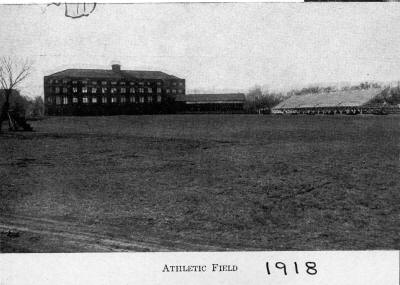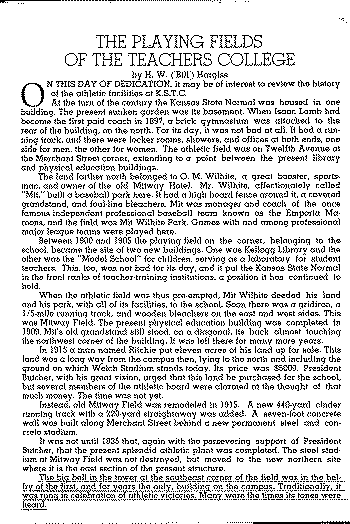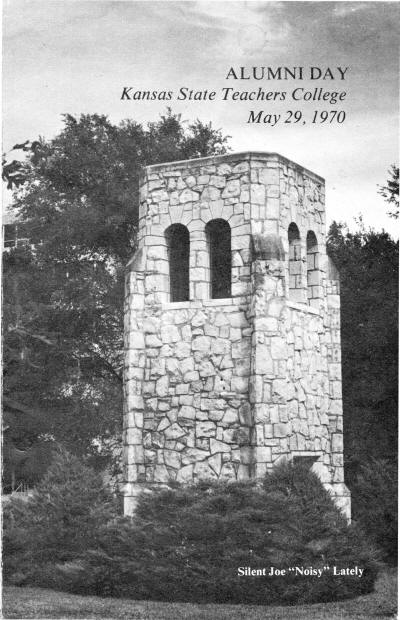|
|
THE PLAYING FIELDS OF THE TEACHER S
COLLEGE
S
COLLEGE
by H. W. (Bill) Hargiss
ON THIS DAY OF DEDICATION, it may be of interest
to review the history of the athletic facilities at K.S.T.C. At the turn of the
century the Kansas State Normal was housed in one building. The present sunken garden
was its basement. When Isaac Lamb had become the first paid coach in 1897, a brick
gymnasium was attached to the rear of the building, on the north. For its day, it
was not bad at all. It had a running track, and there were locker rooms, showers,
and offices at both ends, one side for men, the other for women. The athletic field
was on Twelfth Avenue at the Merchant Street corner, extending to a point between
the present library and physical education buildings.
The land farther north belonged to O. M. Wilhite, a great
booster, sportsman, and owner of the old Mitway Hotel. Mr. Wilhite, affectionately
called "Mit," built a baseball park here. It had a high board fence around it, a
covered grandstand, and foul-line bleachers. Mit was manager and coach of the once
famous independent professional baseball team known as the Emporia Maroons, and
the field was Mit Wilhite Park. Games with and among professional major league teams
were played here.
Between 1900 and 1905 the playing field on the corner,
belonging to the school, became the site of two new buildings. One was Kellogg Library
and the other was the "Model School" for children, serving as a laboratory for student
teachers. This, too, was not bad for its day, and it put the Kansas State Normal
in the front ranks of teacher-training institutions, a position it has continued
to hold.
When the athletic field was thus pre-empted, Mit Wilhite
deeded his land and his park, with all of its facilities, to the school. Soon there
was a gridiron, a 1/5-mile running track, and wooden bleachers on the east and west
sides. This was Mitway Field. The present physical education building was completed
in 1909. Mit's old grandstand still stood, on a diagonal, its back almost touching
the northwest corner of the building. It was left there for many more years.
In 1915 a man named Ritchie put eleven acres of his land
up for sale. This land was a long way from the campus then, lying to the north and
including the ground on which Welch Stadium stands today. Its price was $5000. President
Butcher, with his great vision, urged that this land be purchased for the school,
but several members of the athletic board were alarmed at the thought of that much
money. The time was not yet. Instead, old Mitway Field was remodeled in 1915.
A new 440-yard cinder running track with a 220-yard straightaway was added. A seven-foot
concrete wall was built along Merchant Street behind a new permanent steel and concrete
stadium.
It was not until 1935 that, again with the persevering
support of President Butcher, that the present splendid athletic plant was completed.
The steel stadium at Mitway Field was not destroyed, but moved to the new northern
site where it is the east section of the present structure.
The big bell in the tower at the southeast corner of the field
was in the belfry of the first, and for years the only, building on the campus.
Traditionally, it was rung in celebrations of athletic victories. Many were
the times it tones were heard.
